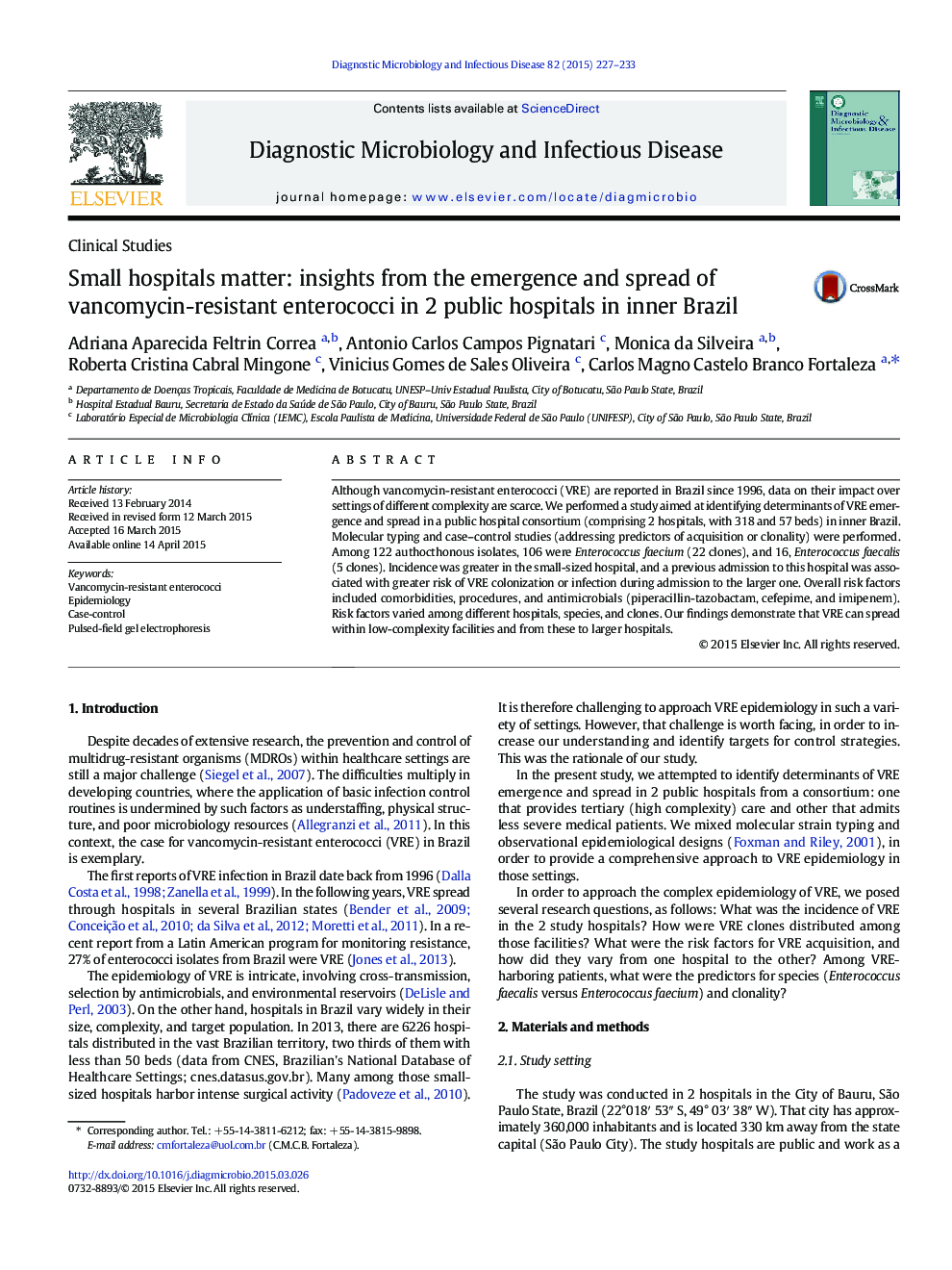| Article ID | Journal | Published Year | Pages | File Type |
|---|---|---|---|---|
| 3346871 | Diagnostic Microbiology and Infectious Disease | 2015 | 7 Pages |
•We studied the emergence and spread of vancomycin-resistant enterococci (VRE) in 2 public hospitals in Bauru, Brazil.•One of the hospitals (318 beds) provided complex, tertiary care, and the other was a small-sized facility (57 beds) for infectious diseases and chronic diseases.•The incidence of VRE was higher in the small-sized hospital.•Overall risk factors for VRE included invasive procedures and antimicrobials.•Strain typing showed polyclonal endemicity, with evidence of spread from the smaller to the larger hospital.
Although vancomycin-resistant enterococci (VRE) are reported in Brazil since 1996, data on their impact over settings of different complexity are scarce. We performed a study aimed at identifying determinants of VRE emergence and spread in a public hospital consortium (comprising 2 hospitals, with 318 and 57 beds) in inner Brazil. Molecular typing and case–control studies (addressing predictors of acquisition or clonality) were performed. Among 122 authocthonous isolates, 106 were Enterococcus faecium (22 clones), and 16, Enterococcus faecalis (5 clones). Incidence was greater in the small-sized hospital, and a previous admission to this hospital was associated with greater risk of VRE colonization or infection during admission to the larger one. Overall risk factors included comorbidities, procedures, and antimicrobials (piperacillin-tazobactam, cefepime, and imipenem). Risk factors varied among different hospitals, species, and clones. Our findings demonstrate that VRE can spread within low-complexity facilities and from these to larger hospitals.
